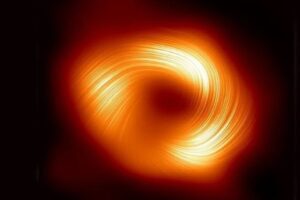Tokyo, 8 August, /AJMEDIA/
The secret to directly detecting dark matter might be blowin’ in the wind.
The mysterious substance continues to elude scientists even though it outweighs visible matter in the universe by about 8 to 1. All laboratory attempts to directly detect dark matter — seen only indirectly by the effect its gravity has on the motions of stars and galaxies — have gone unfulfilled.
Those attempts have relied on the hope that dark matter has at least some other interaction with ordinary matter in addition to gravity (SN: 10/25/16). But a proposed experiment called Windchime, though decades from being realized, will try something new: It will search for dark matter using the only force it is guaranteed to feel — gravity.
“The core idea is extremely simple,” says theoretical physicist Daniel Carney, who described the scheme in May at a meeting of the American Physical Society’s Division of Atomic Molecular and Optical Physics in Orlando, Fla. Like a wind chime on a porch rattling in a breeze, the Windchime detector would try to sense a dark matter “wind” blowing past Earth as the solar system whips around the galaxy.
If the Milky Way is mostly a cloud of dark matter, as astronomical measurements suggest, then we should be sailing through it at about 200 kilometers per second. This creates a dark matter wind, for the same reason you feel a wind when you stick your hand out the window of a moving car.
The Windchime detector is based on the notion that a collection of pendulums will swing in a breeze. In the case of backyard wind chimes, it might be metal rods or dangling bells that jingle in moving air. For the dark matter detector, the pendulums are arrays of minute, ultrasensitive detectors that will be jostled by the gravitational forces they feel from passing bits of dark matter. Instead of air molecules bouncing off metal chimes, the gravitational attraction of the particles that make up the dark matter wind would cause distinctive ripples as it blows through a billion or so sensors in a box measuring about a meter per side.









































